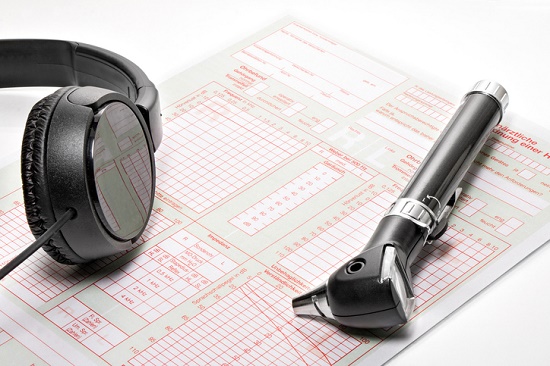
The hearing exam honestly is the easy part. The difficult part is acknowledging your hearing loss and actually reserving the hearing test in the first place.
You have more than likely heard the stats by now: 48 million individuals in the US have hearing loss but only a minor fraction actually do anything about it, and only 20 percent of people who would benefit from hearing aids actually make use of them.
So if you’ve already arranged your hearing test, great job, you’ve already overcome the biggest hurdle to healthier hearing.
The hearing test, as you’ll discover, is a simple and easy, non-invasive process that will determine the extent of your hearing loss to help determine the most appropriate treatment course.
After you first arrive at the office, you’ll start by filling out some paperwork. Then, you’ll consult with your hearing care professional to go over your hearing health history.
Your Hearing Health History
Your hearing loss, if present, can be triggered by direct exposure to loud noise, the normal aging process, or by an underlying ailment. You’ll want to rule out any underlying conditions before moving on to the actual hearing test.
If you have an earwax impaction, for instance, you may very well be hearing better within minutes after a professional cleaning. The existence of any other ailments will be considered and the applicable referral made, if necessary.
After examining your basic medical history, you’ll review your exposure to loud sounds, your hearing loss symptoms, and exactly what you would like to achieve with better hearing.
It’s imperative to establish potential causes, how symptoms are negatively affecting your life, and how better hearing will improve your life, which is all things considered the whole point. Be suspicious of the practitioner that doesn’t appear to care about the reasons why you desire to improve your hearing to begin with.
Testing Your Hearing
There’s one more step to take before starting the hearing test: the visual evaluation of the ear with a device called an otoscope. This will help in ruling out any issues with the ear canal, the eardrum, or the elevated accumulation of earwax.
Next, you’ll be escorted to a sound-treated room with your hearing care professional. You’ll be required to wear headphones, and the specialist will start to play you some sounds.
You will be presented with a variety of sounds at assorted frequencies, and you’ll be asked to identify the quietest sounds you can hear at each pitch. This is called your hearing threshold, and the hearing care provider will log these values on a diagram called an audiogram.
The hearing test may also incorporate speech testing, where you’ll be asked to repeat the words delivered to you. Assorted types of words, presented at different volumes with and without background noise, will be presented. This will help confirm if hearing aids can assist you with speech understanding.
When the hearing test is over, your hearing care professional will discuss the results with you.
Assessing Your Hearing Test Results
Referencing your audiogram, your hearing care professional will now review your hearing in both ears. Depending on the results, your hearing will be characterized as normal or as exhibiting mild, moderate, severe, or profound hearing loss.
If a hearing loss is found, the next step is discussing your treatment options. Seeing as there are no existing medical or surgical treatments to repair hearing damage, this means examining your hearing aid options.
Present hearing aids are available in a wide array of shapes, sizes, and colors, at different prices with several sophisticated features. In choosing your hearing aids, it’s crucial to work with an expert hearing care professional for three main reasons:
- They can help you identify the best hearing aid model to meet all of your goals.
- They can help you determine the advanced features you need—as well as with the ones you don’t—at a price that suits your budget.
- They can program your new hearing aids to amplify only the sounds you have trouble hearing—established by the hearing test—ensuring optimal sound quality.
And that’s it, a quick, easy procedure in exchange for a lifetime of better hearing. We’d say that’s a pretty good deal.
We look forward to seeing you!